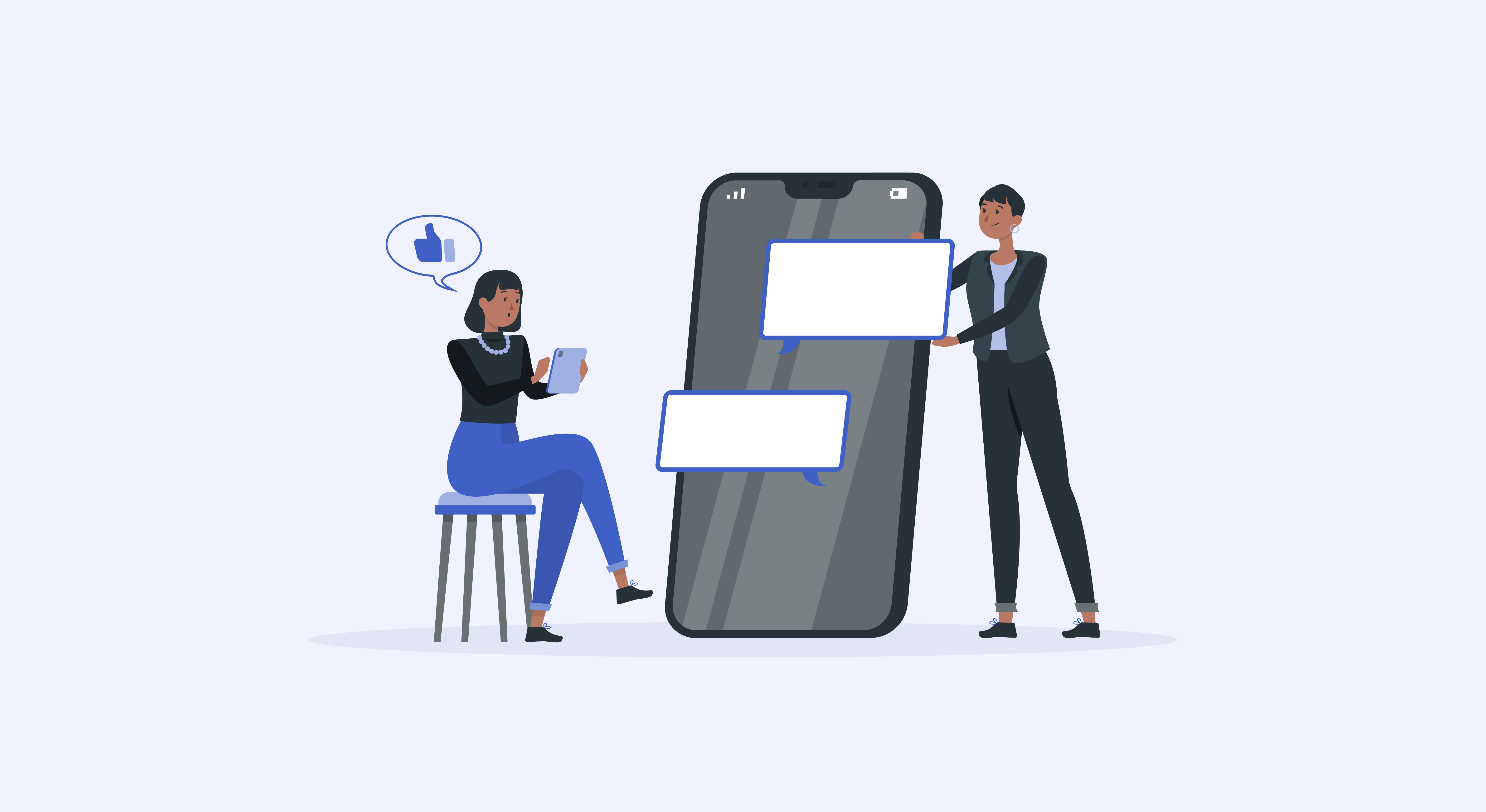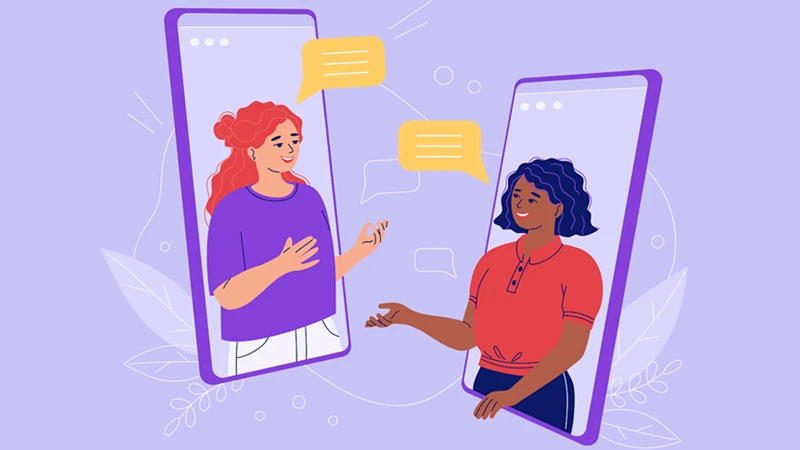10 Live Chat Etiquette Rules For Best Customer Experience

Live chat has become a vital tool for engaging with customers directly on your platform, offering a quick and personal way to address their needs. However, the effectiveness of live chat hinges not just on its availability, but on how it's used. Adhering to certain etiquette rules can significantly enhance the customer experience, making interactions smoother and more productive. This blog outlines 10 key customer service live chat etiquette rules designed to foster positive engagements, ensuring customers feel heard, respected, and valued. From timely responses to maintaining professionalism, these guidelines will help you elevate your customer service and build stronger relationships with your audience.
What is Live Chat Etiquette?

Live chat etiquette refers to the set of guidelines and best practices that govern interactions between customer service representatives and customers through live chat. It encompasses aspects such as prompt responses, use of polite and clear language, personalization of the conversation, and maintaining professionalism regardless of the customer's tone. Proper business live chat etiquette ensures that customers have a positive and efficient experience, feeling valued and understood. It's about creating a friendly yet respectful environment where queries are addressed effectively, fostering trust and satisfaction. Adhering to these principles is crucial for delivering superior customer service and building lasting relationships with your audience.
Why Is Chat Etiquette Important for CX?

Chat etiquette plays a crucial role in customer experience (CX) for several reasons, directly impacting how customers perceive and interact with a brand. Here’s why maintaining high standards of chat etiquette is essential:
- First Impressions Matter: The initial interaction a customer has with your live chat can set the tone for their entire experience with your brand. Polite, professional, and helpful chat interactions foster a positive first impression.
- Builds Trust and Loyalty: Customers are more likely to return to and recommend a brand that treats them with respect and understanding. Proper chat etiquette ensures customers feel valued, building trust and loyalty over time.
- Reduces Misunderstandings: Clear and concise communication minimizes the chances of misunderstandings, ensuring that customer issues are resolved efficiently. This clarity is achieved through adherence to chat room etiquette, which emphasizes understanding and addressing the customer's needs accurately.
- Enhances Brand Reputation: Every chat interaction reflects on your brand. Consistently positive experiences, guided by good chat etiquette, enhance your brand's reputation, encouraging word-of-mouth promotion and repeat business.
- Increases Customer Satisfaction: When customers receive timely, respectful, and effective responses, their overall satisfaction with the service improves. This satisfaction is a direct outcome of following chat etiquette principles, such as prompt responses and personalized assistance.
- Encourages Positive Feedback: Satisfied customers are more likely to leave positive feedback, which can attract new customers. Good chat etiquette not only resolves current issues but also contributes to a cycle of positive engagement and growth for the brand.
10 Important Live Chat Etiquette Rules
Here are the 10 best live chat etiquette examples to improve your customer experience:
Respond Promptly
Responding promptly in live chat is crucial for providing a positive customer experience. When customers reach out via live chat, they expect quick and efficient service. A delayed response can lead to frustration and may even cause the customer to leave the website altogether.
The solution lies in setting up a system that alerts chat representatives the moment a new query comes in. Additionally, having a team adequately staffed to handle the volume of chat requests ensures that each customer is attended to swiftly.
Implementing automated greetings or acknowledgments can also inform customers that their message has been received and will be addressed shortly. This approach maintains engagement and reassures customers that help is on the way, minimizing potential dissatisfaction from waiting.
Use Polite and Professional Language
Using polite and professional language in live chat is essential for creating a positive interaction. Customers approach live chat seeking help or information, and the tone of the conversation significantly impacts their experience.
The issue arises when chat representatives use casual or overly familiar language, which might not resonate well with all customers. This can lead to misunderstandings or a perception of unprofessionalism.
The solution is to train chat representatives to use courteous language consistently. This includes using proper greetings, saying "please" and "thank you," and avoiding slang. Such a practice ensures that all customers receive a uniformly respectful and professional service, enhancing their overall experience with the brand.
Personalize the Conversation
Personalizing the conversation in live chat is about making each customer feel recognized and valued. Often, live chat interactions can feel impersonal and scripted, leaving customers feeling disconnected from the brand.
The solution lies in tailoring the chat to the individual's needs and history with the company. This involves using the customer's name, referencing past interactions or purchases, and showing genuine interest in solving their problem.
By taking these steps, you transform a generic exchange into a personalized experience. This not only addresses the customer's immediate needs more effectively but also strengthens their overall relationship with the brand, leading to increased satisfaction and loyalty.
Listen Actively
Listening actively during a live chat is crucial for understanding the customer's needs and concerns. Often, customers may feel unheard if their issues are misunderstood or if responses seem generic. This can lead to frustration and a negative perception of the service.
The solution lies in carefully reading the customer's messages and asking clarifying questions when necessary. This approach ensures that you grasp the full context of their issue, allowing you to provide a more accurate and helpful response. Additionally, summarizing their points before providing a solution can reassure the customer that their issue has been fully understood.
By practicing active listening, you not only resolve issues more effectively but also build a rapport with customers, enhancing their overall experience.
Maintain Clarity and Conciseness
Maintaining clarity and conciseness in live chat is essential for effective communication. Customers often reach out via chat for quick answers. Long-winded responses can confuse and frustrate them, leading to a poor experience.
The solution lies in crafting responses that are to the point yet informative. Start by understanding the customer's query thoroughly. Then, respond with direct answers and clear instructions. If a complex explanation is necessary, break it down into simpler, digestible steps.
This approach ensures that customers receive the information they need swiftly and accurately. It respects their time and enhances their overall experience with your service.
Avoid Jargon and Technical Terms
Using jargon and technical terms in live chat can confuse customers, especially those not familiar with industry-specific language. This confusion can lead to misunderstandings, frustration, and a negative customer experience. Customers seek clear and straightforward answers to their queries, and complex terminology can act as a barrier to effective communication.
The solution is to use simple, everyday language that is easily understandable by the average person. If technical explanations are necessary, they should be broken down into more accessible concepts. Additionally, offering to explain terms or providing examples can help ensure the customer fully grasitates the information being conveyed. This approach not only enhances understanding but also builds a more relatable and human connection between the customer and the brand.
Show Empathy and Understanding
Showing empathy and understanding in live chat interactions is about recognizing and validating the customer's feelings or frustrations. When a customer reaches out, often they're looking for more than just a solution; they're seeking acknowledgment of their situation.
Empathy involves putting yourself in the customer's shoes. For instance, if a customer is upset about a delayed order, rather than just stating the policy, acknowledge the inconvenience caused. You might say, "I understand how disappointing it must be to not receive your order on time."
The solution then follows this understanding. After acknowledging their feelings, you can proceed to address their issue, such as offering to track the order or explaining the next steps. This approach not only helps in resolving the immediate problem but also strengthens the customer's trust and relationship with the brand.
Ask for Permission Before Transferring or Escalating
In live chat interactions, sometimes an issue arises that requires the assistance of another team member or a higher authority. Abruptly transferring a customer without their consent can lead to confusion and frustration, negatively impacting their experience.
The solution lies in politely asking for the customer's permission before making any transfer or escalation. This approach shows respect for the customer's time and preferences, ensuring they feel valued and informed throughout the process.
By explaining the reason for the transfer and how it benefits the resolution of their issue, customers are more likely to understand and agree to the process. This simple act of courtesy significantly enhances the customer's experience, fostering trust and satisfaction.
End the Conversation Politely
Ending a conversation politely in live chat is crucial for leaving customers with a positive impression. Abrupt or rude endings can tarnish the entire experience, regardless of how well the issue was resolved.
The solution lies in ensuring the customer feels their concerns have been fully addressed. Ask if there's anything more you can assist with before concluding. Use courteous language that signals the end of the conversation, such as "Is there anything else I can help you with today?"
Finally, thank them for reaching out and encourage them to contact you again if needed. This approach not only resolves the immediate interaction positively but also fosters a welcoming atmosphere for future communications.
Follow Up if Necessary
Following up is a key aspect of live chat etiquette that ensures no customer query goes unresolved. Sometimes, an issue might not be solved in a single chat session, or additional information may become available after the conversation has ended.
In such cases, reaching out to the customer proactively demonstrates your commitment to their satisfaction. It shows that you value their time and are dedicated to providing a solution.
This follow-up can be a simple message checking if their issue was resolved to their satisfaction or providing the additional information promised during the initial interaction. It not only helps in resolving the issue fully but also strengthens the customer's trust in your service.
Step Up Your Live Chat Into an AI Shopping Assistant

Transforming your live chat into an AI Shopping Assistant, such as Manifest AI, significantly enhances how you assist and engage with your customers. Manifest AI leverages advanced GPT technology to understand and respond to customer inquiries in real time, offering a level of interaction that goes beyond traditional chat services.
This assistant excels in providing immediate, relevant support and product suggestions, making shopping easier and more enjoyable for your customers. Features include support that promptly addresses customer questions, nudges that gently guide customers towards products they might like, interactive quizzes that gather preferences to tailor suggestions, and a search and recommendation system that helps customers find exactly what they're looking for.
By upgrading to Manifest AI, you offer your customers a shopping assistant that not only responds to their needs but anticipates them, ensuring a smooth and personalized shopping experience that can lead to increased satisfaction and sales.
Conclusion
Adhering to these 10 live chat etiquette for customer service is essential for providing a superior customer experience. By responding promptly, communicating clearly, and showing empathy, you create a welcoming and supportive environment for your customers. Personalizing conversations and following up when necessary further demonstrate your commitment to their satisfaction. Implementing these guidelines ensures that every chat interaction adds value to your customer's journey, building trust and loyalty towards your brand. Remember, the quality of your live chat service can significantly impact how customers perceive your business, making it crucial to prioritize these etiquette rules in every interaction.

.png)
